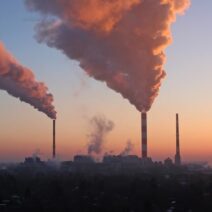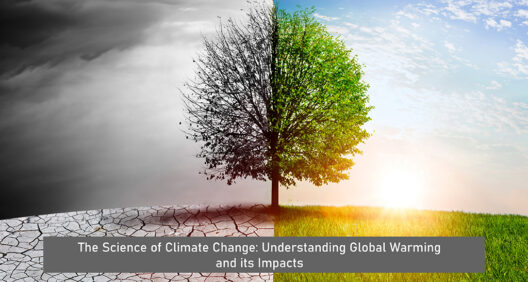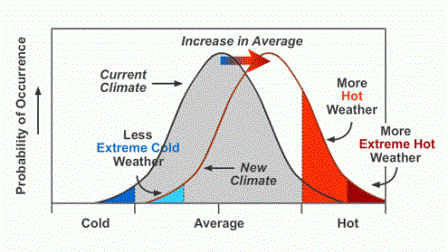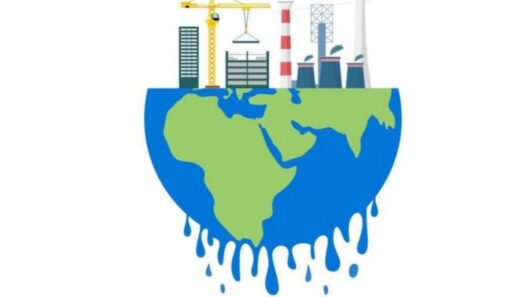As we delve into the intricate web of climatic shifts, a chilling realization emerges: extreme weather is becoming the new normal. This observation, once relegated to the realm of curiosity, now bears grim implications for humanity. With every unprecedented hurricane, relentless drought, and unyielding heatwave, the fingerprints of global warming are starkly evident. The interplay between climate change and weather phenomena has become a focal point for scientists, policymakers, and environmental activists alike.
The term “climate change” encompasses a myriad of changes occurring in Earth’s systems, primarily driven by human activities. The combustion of fossil fuels, deforestation, and industrial practices are a few of the main culprits contributing to the escalation of greenhouse gases in the atmosphere. As a direct consequence, we have witnessed a marked increase in global temperatures. According to scientific consensus, even a seemingly innocuous increase of 1.5°C can trigger catastrophic repercussions, setting off a cascade of extreme weather events.
To understand how global warming is reshaping our weather forecasts, one must first grasp the fundamental principles of meteorology. Weather, a complex amalgamation of atmospheric conditions, is heavily influenced by regional and global climatic factors. For instance, as the Earth’s temperature rises, the capacity of the atmosphere to retain moisture also escalates. This elevation in humidity can amplify rainfall intensity, culminating in severe flooding in vulnerable regions. Consequently, meteorologists are compelled to recalibrate their models, raising the specter of uncertainty as they attempt to predict the unpredictable.
One glaring example of this phenomenon is the increase in the frequency and severity of hurricanes. The Gulf of Mexico, known for its warm waters, has become a breeding ground for ferocious storms. Hurricane patterns have altered drastically, not only in intensity but also in the duration of their destructive potential. The catastrophic storms of recent years have compelled meteorological agencies to revise their forecasting models, integrating additional variables and probabilistic simulations. The conundrum, however, lies in the limitations of existing models, which struggle to accommodate the vastly shifting dynamics introduced by climate change.
Moreover, the ramifications of extreme weather extend far beyond mere inconveniences. The ecological, economic, and social impacts resonate through every stratum of society. Agriculture, the backbone of many economies, finds itself under siege. Prolonged droughts exhibit deleterious effects on crop yields, while excessive rainfall floods fields, decimating harvests. The underlying result is a volatile food supply chain, leading to escalated prices and heightened hunger on a global scale. Farmers, once the steadfast pillars of rural communities, now grapple with uncertainty, driven to the brink as their livelihoods become increasingly jeopardized.
Urban environments are not immune to this plight. Cities, designed to accommodate a stable climate, are now facing unprecedented heatwaves and flooding. Infrastructures, often unprepared for such extremes, buckle under the pressure. The urban poor, in particular, are disproportionately affected, lacking the resources to adapt or relocate. As cities expand, the phenomenon of urban heat islands—areas that experience significantly warmer temperatures than their rural counterparts—becomes more pronounced, exacerbating health issues related to heat exposure.
The psychological effects of extreme weather cannot be overlooked either. Communities devastated by repeated floods or wildfires exhibit significant increases in anxiety, depression, and post-traumatic stress disorders. The relentless cycle of recovery and rebuilding fosters a sense of despair. The mental health crisis stemming from climate-induced disasters is a ticking time bomb, warranting comprehensive strategies and supportive interventions.
In the face of such overwhelming challenges, the urgency of climate action cannot be overstated. However, a multitude of factors complicates the implementation of effective measures. Political inertia, fueled by lobbying from fossil fuel industries, often stymies progressive agendas. Public perception of climate change varies widely, ranging from apathy to alarm. Nevertheless, education and advocacy play pivotal roles in galvanizing action and shifting societal attitudes. It is imperative to foster dialogues that elucidate the tangible impacts of extreme weather, bridging the gap between scientific knowledge and public understanding.
The concept of resilience has emerged as a fundamental tenet in the discourse on climate adaptation. It emphasizes not only the ability to withstand extreme weather but also the capacity to anticipate and adapt to forthcoming changes. Local governments and communities are increasingly investing in infrastructure designed to mitigate the impacts of climate change. Innovative approaches, such as green roofs, urban forests, and sustainable drainage systems, offer promising avenues for enhancing urban resilience and reducing vulnerability.
Lastly, collaboration among nations presents a formidable opportunity to confront the shared threat of climate change. International frameworks and agreements, such as the Paris Accord, underscore the necessity of collective action. Nations must transcend political divisions and forge partnerships, pooling resources and expertise to devise sustainable solutions. The time for decisive action is now. As the once-clear delineations between weather patterns dissolve, humanity must unite in the pursuit of safeguarding our planet.
In conclusion, extreme weather is no longer an anomaly; it is the new normal. The reshaping of our forecasts is inextricably linked to the complex tapestry of global warming. As the consequences reverberate throughout the ecological, economic, and social realms, a collective response becomes imperative. Through education, advocacy, and international collaboration, we can confront this monumental challenge. The future of our planet hinges on our ability to adapt, innovatively address, and ultimately mitigate the implications of extreme weather.








